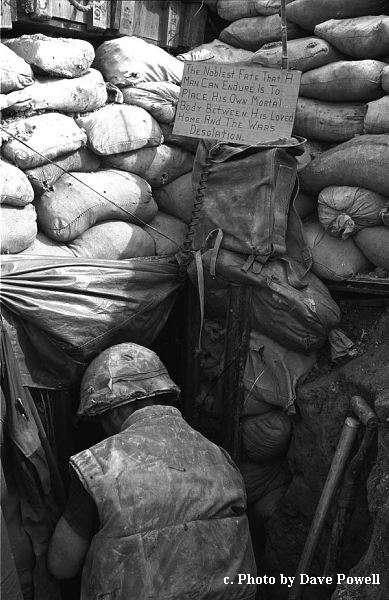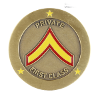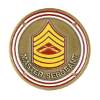Fall of Saigon
- Welcome to the PBS GAMETEAM's website, WE ARE RECRUITING. JOIN US and get a FREE VIP slot on our servers! -
- Our Thanks to Adaari, balz, hal, Bron,Yordy,Jonathan,Jozsef,BradJerney, wenz,Martin,Barry,chris, Ruben, Itsvan, Marko, Lan, Valter, Erik, joe, Matthew, Alois, Graig, Jason, caveman,Edwards, Jaimie, Ondre, Toby,Google, Phill, Gchrome,cramer,Rick,Jermey, lucas, kold, Roberto, Farq,Xiaton, Karlo, Rainman, Erik, Andrea and a very special thanks to our great premium members: Pon, Smekkes, Muttonchop,Krabbepote, Stoommeester, arjan, Xillax, Kapsta, Alexander,Duck, HausserBG, Bravecoward, Reint,Bas,Batuhan, Gunnar,Nuttycake,CJ Mini,tworooms,Jeffrey, Swag, Waverider, Sheepfarmer and Oberfield!for supporting the PBS GAMETEAM! -
- Do you like our servers or site? Support us on this page -
- Do you have a question? contact us -
- Join our Discord! -
- Check our latest news about our PBS games on this link -
- Would you like to donate for our servers? Please check this link -
- We are the best HLL, ARMA, BB, RS2, MW3 community out there! Sign up today! -
- Like us on Facebook! -
- Like us on Twitter! -
- We have many new wars! Check and signup here pls -
- Join our latest community event #here! -
- This topic has 3 replies, 1 voice, and was last updated 4 years, 8 months ago by
 Powerbits.
Powerbits.
-
AuthorPosts
-
-
25/08/2020 at 12:40 #50147
North Vietnamese planners knew the Americans did not suspect attacks in cities in 1968. Why? Because the spy, Pham Xuan An, codename X6 informed them that American troops were stationed around Saigon, but not in the city itself. And, Pham Xuan An understood the American mindset from his contacts as a Time Magazine reporter. American leaders did not suspect direct Saigon attacks. This article describes the main attacks by NVA/VC forces in Saigon during the 1968 Tet Offensive.
North Vietnamese Attack Plan
The very complex plan required nationwide coordination that was new to Hanoi. In 1967, several organization changes were made to ensure good command and control. For instance, COSVN dissolved the communist Military Region 7, and the Saigon-Gia Dinh Military Region, and created six sub regions instead. They assigned experienced military commanders and staff to each one.
Sub regions near Saigon were reinforced with sapper and commando units trained and equipped for urban warfare. Four new “Spearhead Battalions† were staffed with specialized communications personnel. Their mission was to relieve sapper and commando units within 48 hours, and exploit any local successes these specialized units achieved.
Sub Region 6 covered the precincts of Saigon. COSVN assigned 11 sapper and commando teams to three distinct concentrations on the east, south and north sides of the city. These units planned for  simultaneous attacks from many different directions.
Sapper and conventional forces were intended to provide both a “spearhead†and in-depth deployment of forces. The objective was to complicate the defense of Saigon, and ensure effective command and control as they approached their targets.
To reinforce the “Spearhead Battalions,†several PAVN conventional units, such as the 88th and 568th Infantry Regiments, along with several artillery, signal, sapper, and chemical defense units were sent by COSVN to assist with the attack. These regular PAVN units were assigned to block American and ARVN divisions located north, northwest, and east of Saigon, so they could not interfere with forces attacking inside the city. In addition, the 5th, 7th, and 9th PAVN divisions were deployed as reinforcements.
The spy, Pham Xuan An, and his boss Major Nguyen Van Tau, alias Tu Cang had surveyed Saigon two years earlier, and selected 20 targets in Saigon, including the Presidential Palace, the US Embassy, the Phu Tho racetrack, and the Chinese Cholon district, ARVN Joint General Staff, Tan Son Nhut Air Base, the Republic of Vietnam Navy Headquarters, and the National Radio Station.
“Our attacks on the US Embassy and Presidential Palace were feints,†Tu Cang said in a 2004 interview. The attacks on government buildings, and timing at the Tet new year celebration were hoped to foment a “general uprising.†This would be initiated and exploited by the “Spearhead Battalions,†using their communication capabilities. And, they wanted to capture and exploit the National Radio Station to broadcast propaganda.

Saigon Defenses
The South Vietnamese were sensitive of American military presence in Saigon. Recognizing this, and showing confidence in ARVN capability, the US MACV command granted South Vietnam responsibility for the city’s defense. Only the 716th Military Police battalion, (716th MP) guarded American installations there. The exception was Tan Son Nhut Airbase, where the USAF 377th Security Police Squadron (377th SPS) handled base defense.
The ARVN Saigon defense consisted of the 5th Ranger Group and seven regional, service and police battalions. There were also two elite airborne battalions on hand when Tet erupted. The RVNAF 2nd Service Battalion also shared responsibility for the defense of Tan Son Nhut. The 30th and 33rd Ranger Battalions fought in the Cholon area.
Although American defenses were initially limited to military and security police, they were reinforced. Infantry and mechanized units from outside of Saigon quickly moved in and fought. The 3rd Battalion 7th Regiment fought at Cholon, supported by the mechanized 5th Battalion, 60th Infantry and the 17th Cavalry. Unfortunately, these units lacked urban warfare training.

Black Smoke over Saigon
Tan Son Nhut
The key military installation was attacked in the early morning of 31 January. The VC 9th Division, a 2665-man force commanded by Colonel Nam Truyen had more than half its previous combat losses replaced with NVA soldiers. The D-16 battalion attacked the Vinatexco textile mill and set up a field command post. 269th Battalion attacked the 051 Gate. The 267th Battalion was to follow, and exploit the opening. 1st Battalion, 271st Regiment planned to assault the flightline and base facilities.Using bangalore torpedoes and satchel charges VC breeched concertina wire near Gate 051.
A five-man security team fired M-60 machine gun rounds into the attackers, but the gate and bunker were overrun by 0345. The 377th SPS sent skirmish teams east of the gate. 4 UH-1C Huey gunships from the 120th Assault Helicopter Company dropped flares and began firing rockets and machine guns at the attackers.
However, VC forces reached the flightline, and placed satchel charges under RVNAF C-47s, damaging 14 of them. The attackers were forced to retreat by a quick reaction team. VC could not get across the Whiskey 8 taxiway as US forces there were being reinforced.
ARVN forces joined with three M41 light tanks, and formed a defensive “horseshoe.†Two of these tanks were knocked out by RPGs, but the ARVN force broke up a VC flanking maneuver.
By dawn, the VC attackers began to withdraw at Gate 051. The ARVN 8th Airborne Battalion, awaiting transport to Khe Sanh, were committed to the battle, and began a counterattack. Security advisor Lt. Col. Jack Garred requested assistance. This was answered by an armored cavalry troop from Cu Chi Base Camp. They moved to block the VC withdrawal route.
By 1219, the last VC inside the base perimeter surrendered. But, the counterattack continued, and combat occurred at the Vinatexco mill. The mill and village around it were cleared by 1630.
The Americans lost 22 killed and 82 wounded. ARVN losses were 29 killed and 15 wounded. The NVA/VC losses were 669 killed and 26 captured.

377th SPS Troops at Tan Son Nhut
Cholon and Phu Tho Racetrack
Viet Cong attacked and captured Cholon, the western section of Saigon, including the strategically important Phu Tho Racetrack. (It was an alternate helicopter landing zone.) The 6th Binh Tan Battalion spearheaded the attack, occupying the racetrack as a command post. Their goal was to capture the Chi Hoa prison 1.5 km northeast of the racetrack.
The US 716th MP sent a squad by truck to an intersection near the racetrack. They recovered two MPs that had just been killed. The squad withdrew to a fighting position in a building. They realized that more help was needed.
716th MP commander Lt. Col. Gordon Rowe sent further reinforcements, but they were unable to push the VC off the racetrack. Ultimately, the II Corps Field Force commander, Lt. Gen. Frederick Weyland sent the 3rd Battalion, 7th Infantry Regiment to the scene. Lt. Col. John Gibler was the battalion commander. Task Force Gibler was formed with the 3/7 Infantry, Troop D, 17th Cavalry, the 5/60 Infantry battalion (mechanized,) and the ARVN 33rd and 38th Ranger battalions.
The racetrack was at the intersection of several streets, and if the VC could hold the track, they would have a good chance of holding Cholon. By the dawn of 31 January, the VC occupied much of the Cholon District. The urban area had many two-story wooden-frame buildings. The American forces could not effectively use airmobile assault. And, the number of trucks and APCs entering had to be limited.
Task Force Gibler reached the intersection at 1100, with support from helicopter gunships. The lead M113 APC was hit by a RPG. A firefight began with VC firing their AK-47s and RPGs, while the Americans and ARVN returned fire with 106mm recoilless rifles, (RCLR,) and M-16 rifles.
By 1300, Task Force Gibler  was within a block of the racetrack. The VC were fighting from the stadium. Using maximum available firepower, including M-60 machine guns, 106mm RCLR, and     M-79 grenade launchers, Gibler’s forces blasted the stadium. Finally, in late afternoon, GIs charged the last VC holdouts, who chose to melt away into Cholon.
With the racetrack in Task Force Gibler’s hands, the next task was to clear the Cholon neighborhood.
It would be days of house to house fighting. The infantry used C4 plastic explosives to blast holes in interior walls. This allowed advance from building to building without exposing themselves in the open. At close range, Americans and ARVN shot any VC they saw. The whole area smelled of cordite and death. Sometines the Americans held their fire as frightened civilians fled. Other civilians were killed in the crossfire.
On 4 February, civilians were ordered to leave Cholon to allow American and ARVN artillery fire against VC holdouts. The 3/7 Battalion returned to their base at Binh Chanh. ARVN forces were to finish the clearing. But, the South Vietnamese could not deliver the “coup de grace.â€
On 10 February, 3/7 Battalion was called back to Cholon. The VC had retaken the Phu Tho racetrack.
Fortunately, they were driven out by helicopter door gunners. But, the 3/7 battalion had to fight the clearing operation again, cautiously securing buildings, blasting VC, and warily advancing. They fought for four more days to clear Cholon.
Cholon was a mangled mess of destruction. Everywhere were ruined businesses, destroyed homes, smashed cars, broken windows, and dead bodies. Hundreds of civilians perished. The VC tried to blend in with the population of Cholon, but most civilians fled as quickly as they could. They wanted no part of their supposed “liberation†from the Saigon regime. Twelve US soldiers were killed, and 170 VC were killed or captured.

Reinforcements Arriving at Phu Tho Racetrack 10 February 1968
US Embassy
This section is presented last, even though it had less combat and casualties. The political fallout from the US Embassy attack was significant, however. The attacks on the Embassy and the Presidential Palace were similar in size and tactics, one attacking VC sapper platoon each, employing commando-style tactics. However, the outcomes were very different.
The Palace was well defended with the Presidential Guard, National and Military Police, and two tanks. It was too much for the attackers, and they were quickly repulsed. They retreated into a nearby building, holding out for two days in a last-ditch stand. The entire VC platoon was wiped out.
While the US Embassy attack was not successful, the political outcome was quite different. At 0247, sappers of the C-10 Battalion approached the night gate. Two MPs backed into the compound, within its 2.4 meter wall, and shut the steel gate.
Meanwhile, in the street, the attackers used a satchel charge to blow a hole in the wall. Two VC officers led the way through the breach. But, the explosion noise alerted other MPs who turned around and shot the officers. The attackers now had no leadership. However, the two MPs were killed in return fire.
The last message of the wounded MP was “They’re coming in! They’re coming in! Help me! Help me!†A two-man jeep patrol rushed toward the Embassy, only to be cut down by VC gunfire from outside the wall.
There were only two MPs left, one on the rooftop, and the other inside, armed with a pistol, shotgun, and sub-machine gun. The rooftop MPs gun jammed, and the VC could roam around the compound. But, the loss of leadership cost the VC the opportunity to exploit their initial success. They did not enter the building, and instead took shelter at some large flower tubs.
Outside the walls, American reinforcements began to arrive. Although it was still dark, the VC were cornered. Around 0500, a helicopter arrived with airborne soldiers, but VC fire drove it away. Just after daylight, however, MPs forced the gate and killed the few remaining attackers.
Press Reaction
The Embassy was close to the quarters where Western journalists stayed. Within fifteen minutes of the attack, an Associated Press reported typed out his first bulletin. However, the newsmen could not see over the walls, and didn’t really know what was happening inside the compound. Instead, they relied on an excited MP who blurted out: “They’re in the Embassy!â€
An AP Bulletin went out: “The Vietcong seized part of the US Embassy in Saigon early Wednesday . . . . Communist commandoes penetrated the supposedly attack-proof building in the climax of a combined artillery assault that limited warfare to Saigon itself.†This arrived in the US before first edition deadlines, and US newspaper headlines carried the shocking message that the enemy had captured an American symbol.
At 0920, General Westmoreland arrived at the Embassy. He was neatly dressed in his uniform, and held an impromptu press conference. Dead VC bodies were still laying everywhere. Westmoreland stood proudly, and claimed that everything was all right.
So the newspapers presented two conflicting conclusions: One, that the VC had taken over the Embassy, and two, that Westmoreland said everything was okay. An AP reporter later explained that “we had little faith in what General Westmoreland stated.†This reaction by the press would become very pyschologically damaging to the American war effort.
After the Tet Offensive, Time Magazine correspondent and North Vietnamese spy, Pham Xuan An, helped promote the notion that the Tet Offensive was a political victory for the Communists. With his eye on the Time wire, and the news pouring in from around the world, An saw the larger picture. Americans were shocked and dismayed that nothing in Vietnam, not even the U.S. Embassy, was safe from attack.

References
“The Journalist-Viet Cong Spy Who Changed the Course of the Vietnam War,â€Â Thomas A. Bass
†North Vietnam’s 1967 Planning for the 1968 TET Offensive,†Colonel Andrew R. Finlayson, USMC
“Tet Offensive 1968,†James R. Arnold, Osprey Military
†Tet Offensive attack on Tan Son Nhut Air Base,†Wikipedia
“Tet Offensive: 7th Infantry Regiment in Saigon,†John C. McManus, 2004 issue Vietnam Magazine
“Tet Offensive Battle of Cholon and Phu Tho Racetrack,†Wikipedia

General Vo Nguyen Giap
-
25/08/2020 at 21:28 #50196
Excellent historical background
-
18/10/2020 at 08:25 #53772
Yes, very detailed, thank you for this find.

-
18/10/2020 at 11:16 #53783
Yes, very detailed, thank you for this find.

When are you coming back to play with us my friend 🙂
-
-
AuthorPosts
- You must be logged in to reply to this topic.





